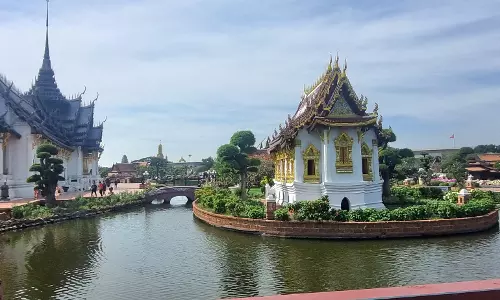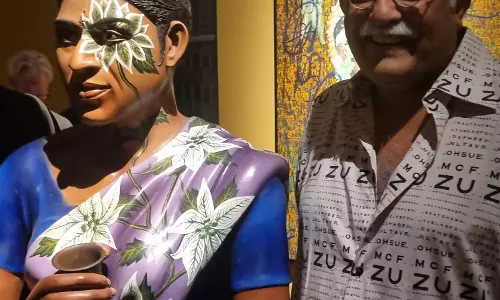Sanctum of solace
In his latest show Sanctum Santorum, at Gallery Threshold, V Ramesh, through a set of 17 paintings, tries to recreate a moment of peace and oneness that a devotee feels when he experiences the presence of his or her ishtadevata, or personal god in a physical or intangible garbhagriha or sanctum where the image of God is enshrined. The artist explains, “Bhakti is singled out as a lietmotiv not only as an underlying, unseen presence, but something that can be felt palpably as an emotional exaltation.”;

In his latest show Sanctum Santorum, at Gallery Threshold, V Ramesh, through a set of 17 paintings, tries to recreate a moment of peace and oneness that a devotee feels when he experiences the presence of his or her ishtadevata, or personal god in a physical or intangible garbhagriha or sanctum where the image of God is enshrined. The artist explains, “Bhakti is singled out as a lietmotiv not only as an underlying, unseen presence, but something that can be felt palpably as an emotional exaltation.” In Indian philosophy, Bhakti itself is part of the shanta rasa, the essence of deep contentment that comes from the encounter of the human with the divine, via spirituality. The paintings are in various moods, colours and styles; from photo-realistic to the expressionist, but each work reverberates with its own deep poignant connect. One of the most arresting works ‘Building Castle in the Air’ engages with the miniature tradition in its rendering. An emaciated man rides an equally thin horse, accompanied by a skeletal dog in an arid landscape, with a castle in the background. The only colour is that of a chameleon, conveying the ever changing nature of desires that capture a man’s soul, leaving it spiritually void. As a contrast, the artist has painted his spiritual guru Ramana Maharishi walking up a hill in a pristine landscape, shorn of all desires and thus vigorous in his search for the eternal rather than the ephemeral. The idea of the transient emerges in all his works on the four women poets. Ramesh says, “My attempt was to translate what was implicit in the written word with the possibilities of the painted image.” Karaikkal Ammaiyar asks that she becomes ugly as a boon, so that she is neither distracted or allows her corporeal self to come in her union with the Universal. Similarly the difference between the self and the One is wiped out by Lala Ded whose poetry echoes this.




